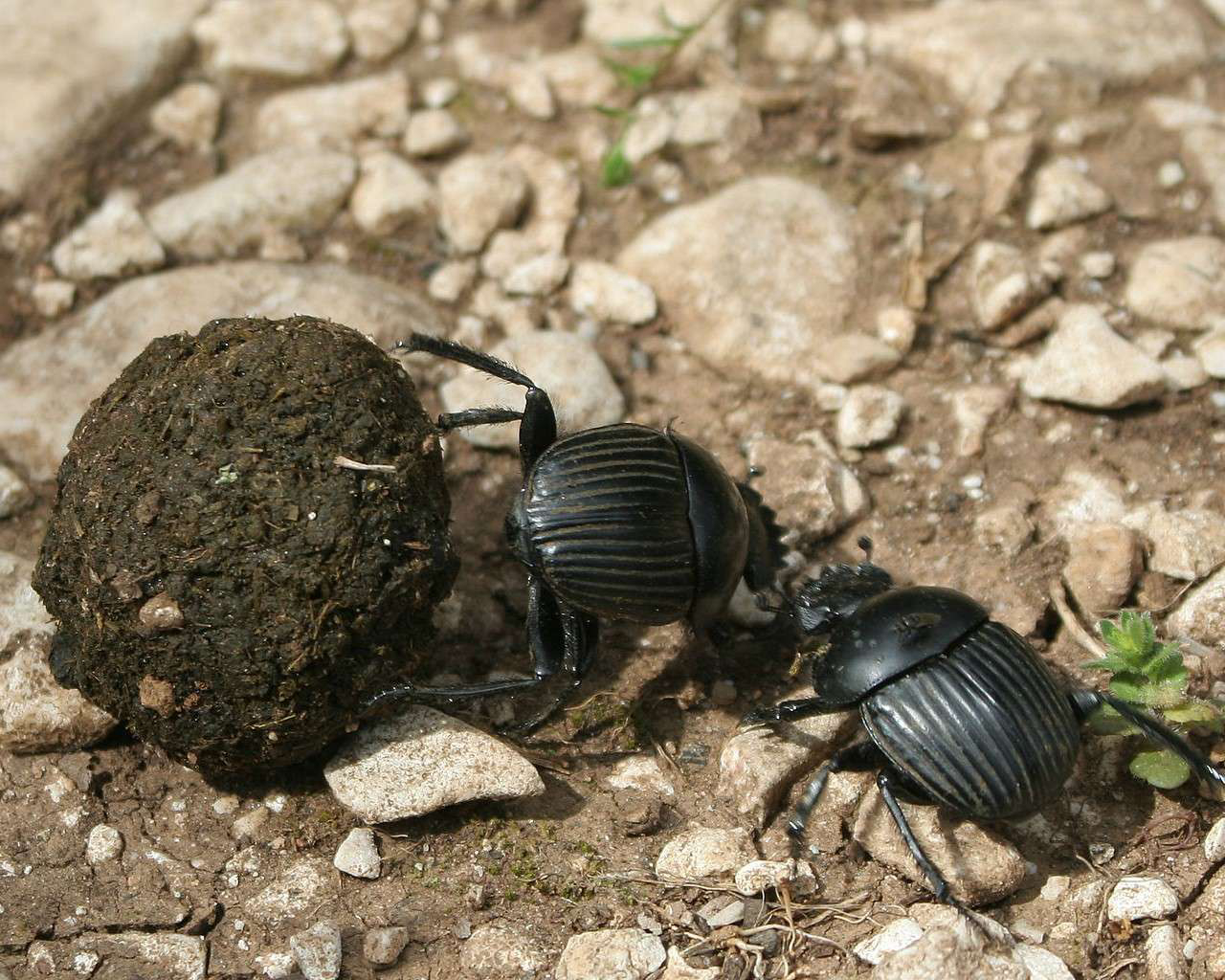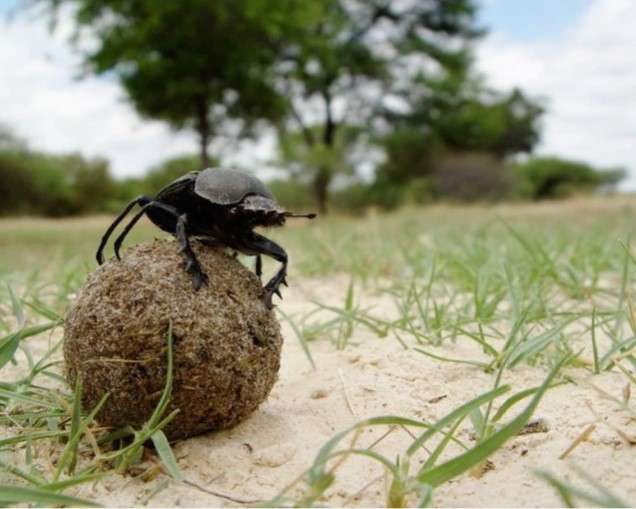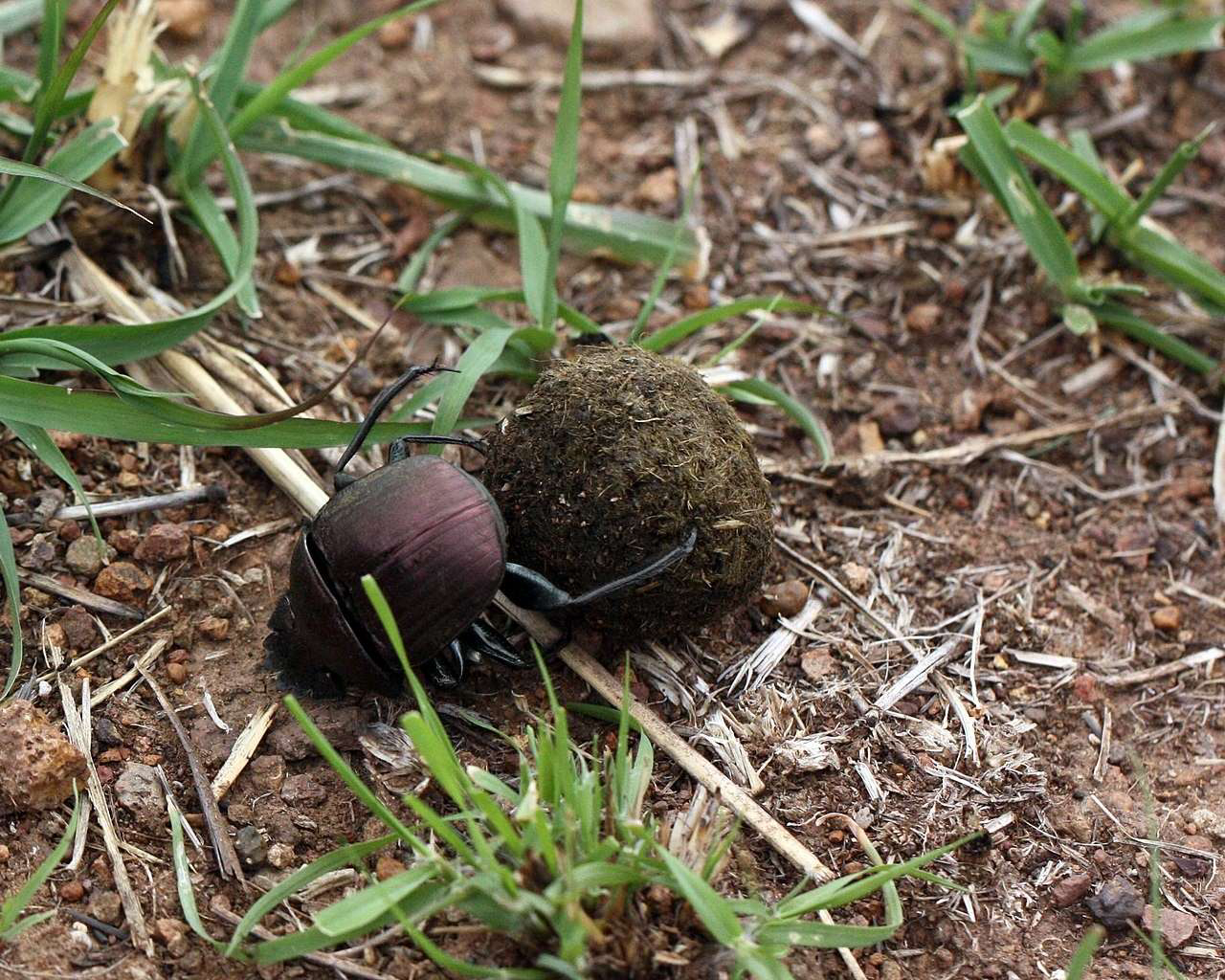
Today people are quite gripped with recycling, and we are remarkably offhand about dealing with our bodily waste away down sewage pipes, which means that most people have perhaps, lost touch with the environmental benefits and organic aids that dung has to offer. However, out in the natural world, no such uncaring waste happens, for which we can acknowledge the species of dung beetles that collect excrement. These smart, rough, prevailing and glossy beetles tirelessly hideaway in the stuff, bury it, lay their eggs in it, eat it, and commonly get rid of it before it produces any problem. These incredible dung beetles don’t just convey ecological balance and other returns, they determine some of the most notable behaviours among all other insects, with mating and nesting instincts typically first seen in birds and mammals.
One of the most impressive and significant characteristics of the dung beetles is their capability to roll dung balls in a straight line. Many dung beetles reside in deserts, grasslands, or other environments with comparatively few landmarks to navigate by. The dung beetles likewise use the night sky to navigate, since they require clear skies to roll their balls in a straight line by night. Some scientists tried to understand that which components of the night sky are used by the dung beetles and to find out this, they took the dung beetles into a model environment where they could control the night sky, a planetarium. A research was published in the scientific journal Current Biology, which explained that the dung beetles take ‘snapshots’ of the stars from the Milky Way and store the images in their brains to navigate on the land. The Lund University, Sweden explained that one part of this process might not be as challenging for the dung beetles as earlier assumed, the celestial navigation. Instead of using the stars, precisely the Milky Way, as a map that the beetles occasionally refer for directions, the researchers say dung beetles take just one snapshot of the constellation, which is enough for their navigation game.

The Milky Way is the galaxy that the sun, Earth, and our solar system are situated in. We can understand part of it because the entire Milky Way is shaped like a disk, and our solar system is located quite close to one edge of it. So, when we look toward the center, we can simply take a glimpse at a flat cross-section of the rest of the disk. The co-author of this research Mr Warrant, additionally speculated that other dung beetles probably navigate via the Milky Way, though the galaxy is the most prominent in the night sky in the Southern Hemisphere. It is probably a widespread skill that insects have, migrating months might similarly be able to do something extraordinary like navigating with the Milky Way. Initially, when the researchers were undertaking the studies, the results were quite surprising. Although the beetles were able to navigate by the entire starry sky, they were likewise equally effective with just the Milky Way.
In the night time, the Milky Way give the impression of a slight, blurred, and pale band. It looks blurry and quite blurred because we look at a thick layer of stars, many of which are too far to see individually. We can barely see any light at all from just part of the Milky Way, and its actual center is too far away. And due to this, the Milky Way is similarly visible only on clear nights, in places far from artificial light. But when the researchers used their artificial sky to test the incredible theory related to the dung beetles, constructing a simplified Milky Way streak that simulated distinct patterns of stars and brightness ramps. Researchers found that the beetles became lost when given patterns of stars within the artificial Milky Way. The dung beetles barely maintained their heading when the two sides of the streak differed in brightness. When the researchers adjusted the planetarium so that it showed only the pale band of the Milky Way and not any stars that were close enough to be seen as individual points of light, the beetles still rolled the ball in a straight line. That proves that they can utilize, to some extent, the alignment of the Milky Way to keep their dung ball on course.

The dung beetle is the first creature ever known to use the Milky Way itself, but the researchers still suspect there are many others out there. The researchers have not identified them yet, or they have discovered that they use the night sky to navigate and left it at that. This straightforward brightness comparison strategy is specifically effective over short distances. Thus, the dung beetles are the only species known to hold their course in this way, and this technique is perhaps similarly utilized by many other nocturnal animals that perform short journeys at night.
The diet of the dung beetles consists almost exclusively of animal excrements. To make sure they have a steady supply, they collect it and roll it into balls, which they can bury for later or keep with them for snacking purpose. These smart animals mate underground with a dung ball, so the female beetle can lay her eggs in it. From a merely human perspective, these dung beetles have a quite disgusting lifestyle. But these smart insects provide a highly useful service to the environment. Just by simply living their lives, the dung beetles conduct ecosystem services that are significant to agriculture, such as reallocating nutrients in the soil, controlling pests and dropping greenhouse gasses. Thus, these incredible insects may have a relatively different lifestyle than other insects, but they are the perfect instance of brains and recovering behaviors of the environment.
________________________
Reference:
- www.nationalgeographic.com
- www.wikipedia.org
